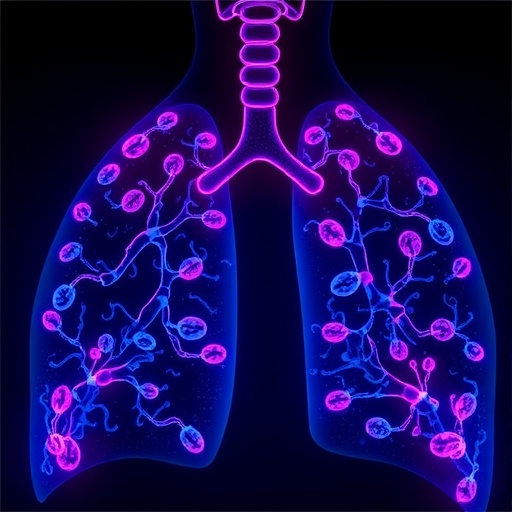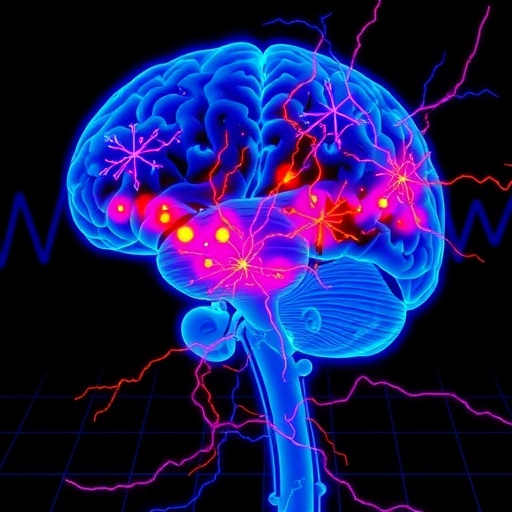In a groundbreaking development that could reshape the landscape of lung cancer treatment, scientists have unveiled a novel mechanism by which cancer cell-derived IL-1β plays a pivotal role in overcoming chemo-immunotherapy resistance in non-small cell lung cancer (NSCLC). This revelation, recently published in Nature Communications, opens up promising avenues for enhancing the efficacy of current therapeutic regimens, which have been hampered by the stubborn resilience of NSCLC tumors.
Non-small cell lung cancer, accounting for approximately 85% of all lung cancer cases, often shows a disconcerting resistance to combined chemotherapy and immunotherapy approaches. Despite advancements in targeting tumor cells and harnessing the immune system, the heterogeneous nature of NSCLC and its ability to evade treatment responses remain significant clinical challenges. The discovery that interleukin-1 beta (IL-1β), a pro-inflammatory cytokine produced by cancer cells themselves, can reverse this resistance heralds a new understanding of tumor-immune dynamics.
At the heart of this breakthrough is the recognition that IL-1β influences the tumor microenvironment in ways that prime NSCLC cells for increased sensitivity to immunogenic cell death and immune checkpoint blockade. Typically, IL-1β is associated with inflammation and has been implicated in tumor progression and metastasis, sometimes seen as a double-edged sword. However, this study demonstrates the context-dependent role of IL-1β, highlighting its capacity to modulate immune cell infiltration, particularly enhancing the activity and recruitment of cytotoxic T lymphocytes.
The investigation employed sophisticated murine models of NSCLC that replicate human tumor heterogeneity and immune interactions. By manipulating IL-1β expression within tumor cells, researchers observed a marked shift in the tumor milieu that reversed established resistance to combined chemotherapy and PD-1/PD-L1 checkpoint inhibitors. This phenomenon suggests that IL-1β is pivotal in reprogramming the immunosuppressive microenvironment, enabling effective antitumor immune responses.
Moreover, the research delved into the molecular pathways activated downstream of IL-1β signaling. Key among these pathways is the NF-κB cascade, which orchestrates inflammatory responses and cell survival mechanisms. Activation of this pathway appears to sensitize tumor cells to cytotoxic agents, as well as enhancing the expression of antigen-presenting molecules, thereby making cancer cells more visible and vulnerable to immune attack.
Importantly, the team also characterized the crosstalk between cancer cells and tumor-associated macrophages (TAMs), which are notorious for fostering an immunosuppressive niche. IL-1β secretion was shown to reprogram TAMs toward a more pro-inflammatory, antitumor phenotype, breaking the vicious cycle of immunosuppression. This re-education of macrophages facilitates the amplification of immune surveillance and eradication of malignant cells.
Clinically, these findings are compelling because they propose IL-1β not merely as a biomarker for therapy responsiveness but as a potential target for therapeutic augmentation. By harnessing or mimicking the effects of IL-1β, it may be possible to convert “cold” tumors—those poorly infiltrated by immune cells—into “hot” tumors, which are more amenable to immunotherapeutic strategies. This shift is critical as cold tumors often correlate with poor prognosis and limited treatment options.
The study also acknowledges the complex balance of IL-1β activity, cautioning that while it has therapeutic promise, aberrant or excessive IL-1β signaling could potentially exacerbate inflammatory damage or contribute to tumor progression under certain contexts. Therefore, therapeutic strategies would require precise modulation of IL-1β pathways to maximize benefit while minimizing adverse effects.
Furthermore, this research underscores the importance of personalized medicine, as patients with specific tumor profiles exhibiting low IL-1β expression or activity might benefit most from therapies enhancing this cytokine’s function. Future clinical trials could stratify patients based on IL-1β levels or signaling competence, optimizing treatment protocols accordingly.
What makes this discovery especially exciting is the potential for combinatorial approaches that integrate IL-1β modulation with existing chemotherapy and immune checkpoint blockade. Such integrative treatments could dramatically elevate response rates and extend survival for patients who currently face poor outcomes with conventional therapies alone.
In addition to therapeutic implications, these findings pave the way for the development of diagnostic tools capable of assessing IL-1β status in tumors, providing oncologists with actionable insights to guide clinical decision-making. Biomarker-driven interventions are a cornerstone of modern oncology; hence, IL-1β could become a cornerstone in the stratification of NSCLC treatment plans.
This study also raises intriguing questions about the broader applicability of IL-1β’s role in other tumor types marked by immunotherapy resistance. The mechanisms unveiled might be conserved across various cancers, suggesting a universal strategy to augment immune responses and combat refractory malignancies.
Given the rapid pace of advancements, it is anticipated that next-generation therapeutics incorporating IL-1β pathway modulators will enter clinical trials within the next few years, potentially revolutionizing treatment paradigms for lung cancer and beyond.
In sum, the research from Perrichet, Lecuelle, Limagne, and colleagues represents a seismic shift in our understanding of the tumor microenvironment and its manipulation to overcome one of oncology’s most formidable challenges. By revealing the dualistic yet targetable nature of IL-1β in NSCLC, this study injects new hope into the quest to conquer chemo-immunotherapy resistance and improve patient outcomes dramatically.
As the scientific community builds upon these insights, the prospect of durable, effective lung cancer therapies that leverage the immune system’s full potential becomes increasingly tangible. These findings reaffirm that the intersection of immunology, oncology, and molecular biology holds the key to the next frontier in cancer treatment.
Ultimately, the future of NSCLC therapy may well depend on our ability to orchestrate the intricate signaling symphonies within tumors—a mission that now appears more achievable thanks to the pioneering work illuminating IL-1β’s role in reversing therapy resistance.
Subject of Research: The role of cancer cell-derived interleukin-1 beta (IL-1β) in reversing chemo-immunotherapy resistance in non-small cell lung cancer (NSCLC).
Article Title: Cancer cell-derived IL-1β reverses chemo-immunotherapy resistance in non-small cell lung cancer.
Article References:
Perrichet, A., Lecuelle, J., Limagne, E. et al. Cancer cell-derived IL-1β reverses chemo-immunotherapy resistance in non-small cell lung cancer.
Nat Commun (2025). https://doi.org/10.1038/s41467-025-64839-4
Image Credits: AI Generated
Tags: advancing cancer treatment strategiescancer cell IL-1βchemo-immunotherapy resistance mechanismsenhancing therapeutic efficacyimmune checkpoint blockade sensitivityinterleukin-1 beta rolelung cancer therapy resistancenon-small cell lung cancer treatmentNSCLC clinical challengespro-inflammatory cytokines in cancertumor microenvironment influencetumor-immune dynamics





